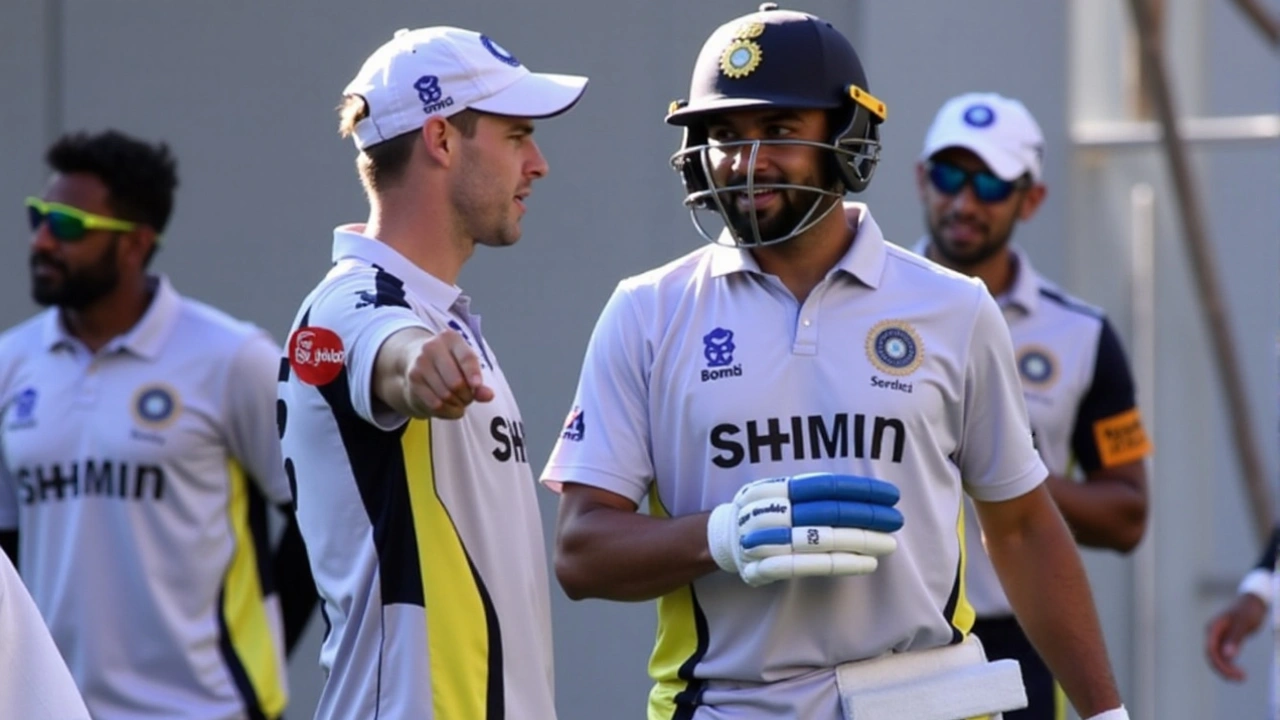
The much-anticipated second Test in the Border-Gavaskar Trophy series between India and Australia is slated to commence on December 6 at the renowned Adelaide Oval. However, expectations of a thrilling contest may be overshadowed by weather forecasts hinting at significant rain disruptions. With a 40% chance of afternoon showers expected on the opening day, players and fans are on edge about how it might impact the day-night Test.
The broader implications of rain go beyond just interruptions in play. They pose strategic challenges for the teams aiming to secure a series-defining victory. India, leading the series 1-0, has all the more reason to seek a decisive win after their infamous outing at this very venue in 2020, where they were dismissed for a meager 36 runs. This haunting memory is still fresh, pushing the team to aim for not just vengeance, but redemption as well. Captain and strategists are meticulously planning how to navigate these unpredictable conditions to outsmart a formidable Australian side.
Weather Conditions and Their Impact
The prospect of rain on Day 1 isn't the only weather-related concern for the teams. According to predictions, the probability of rain decreases to 14% on Day 2 but then spikes dramatically to 74% on Day 4. This potential for weather to heavily influence the match result forces teams into a predicament—should they play aggressively to secure a result before Day 5, or adopt a more cautious approach expecting disruptions?
Such weather dynamics compel the team captains to ponder deeply about their decisions at the toss. Historically, the Adelaide Oval has witnessed only three victories out of six day-night Tests by teams winning the toss. Interestingly, the decision to bat first has seen success in equal measure. This indicates the pitch's recent history of favoring teams who can capitalize early, transforming initial toss decisions into strategic battlegrounds. The potential rain adds yet another layer to this complex equation, making the toss a crucial determinant.

Pitch Report: The Third Player
Damian Hough, the curator of the Adelaide Oval pitch, has prepared an intriguing playing surface that promises to keep both batsmen and bowlers engaged. The pitch features a 6mm grass cover, which is anticipated to play to the strengths of bowlers over time, especially when coupled with the pink ball's notorious swing under floodlights. This scenario is expected to change from the initial balanced nature of the pitch, increasingly tilting favorably towards bowlers as the match advances beyond Day 3.
For batters, the challenge will be calculating risks at the crease while contending with the attractive movement that swing bowlers aim to exploit. However, cloudy weather could counterintuitively negate batting difficulties if the ball fails to swing due to atmospheric inconsistencies. Yet, the pink ball's tendency to move in the air, coupled with a fresh grass layer, could make survival at the crease demanding work in more overcast conditions. These factors, in conjunction with the weather, and skillful handling of conditions by bowlers, can be game-changers during pivotal moments in the match.
Strategic Takeaways for the Teams
Both teams have already started pondering their strategies, with India quite likely looking for an aggressive field setup to further their lead in the series, thereby leveraging any weather-incited fortuitous breaks. In contrast, Australia might be keen to focus on exploiting potential slips by the visitors, aiming to bring to life their iconic battles reminiscent of Adelaide's cricket chronicles. Given Adelaide's past matches, scoring heavily in the first innings seems imperative to build psychological pressure through collapsing depths of second innings, compounded by pitch deterioration.
Furthermore, the ability to swiftly adapt strategies to meet the changing conditions of play can define the outcomes of such high-octane matches. This delicately balances human perseverance against fluctuating weather patterns and the ongoing battles between bat and ball.
Regardless of uncertainty, the upcoming Border-Gavaskar Trophy encounter stands testament to the resilience and tenacity of two cricket giants that continue to capture cricket aficionados' fascination worldwide. Challenges posed by weather conditions, pitch balance, and team readiness reflect the multilayered drama expected on and off the field as both groups look to impress on an international stage.





